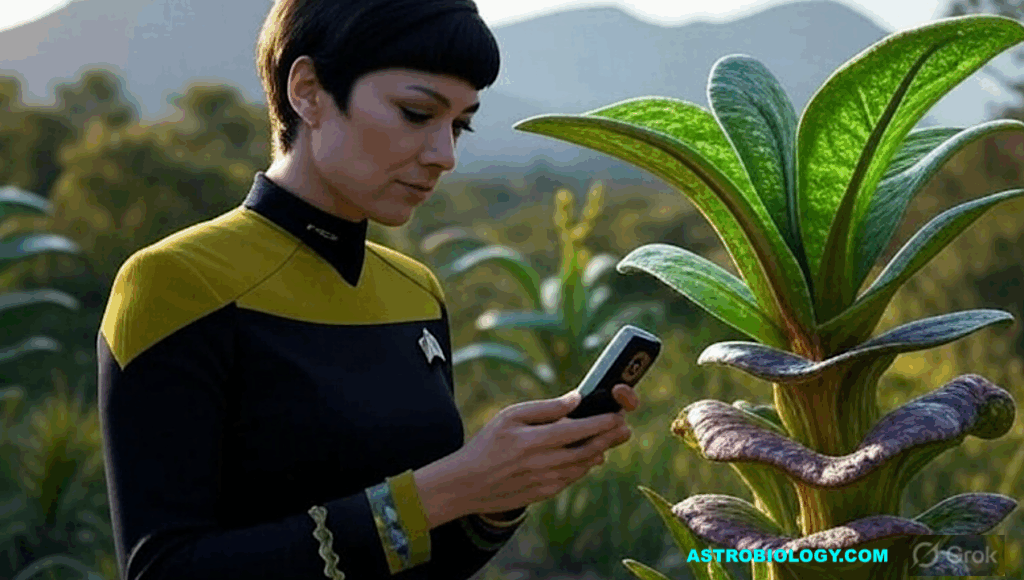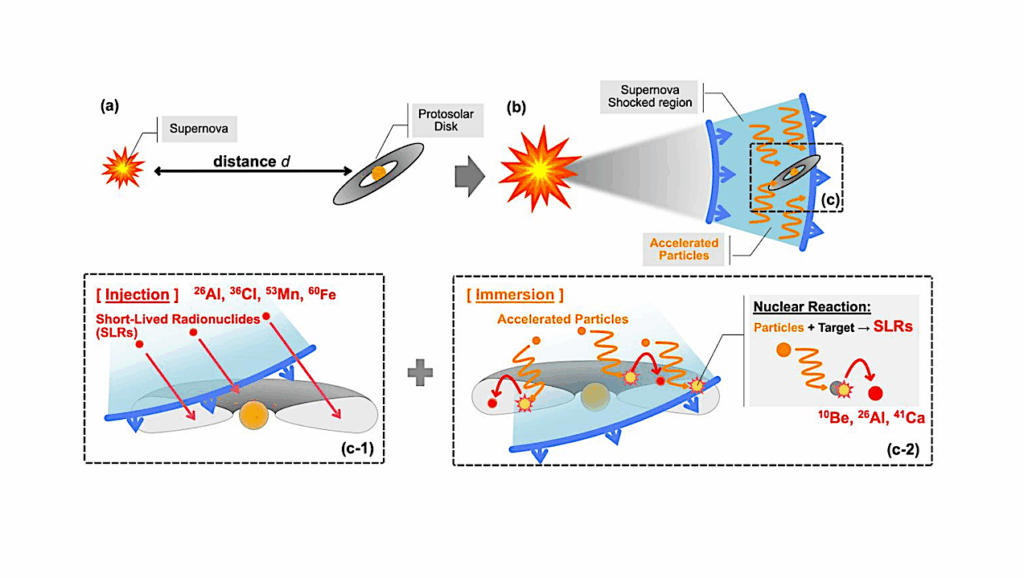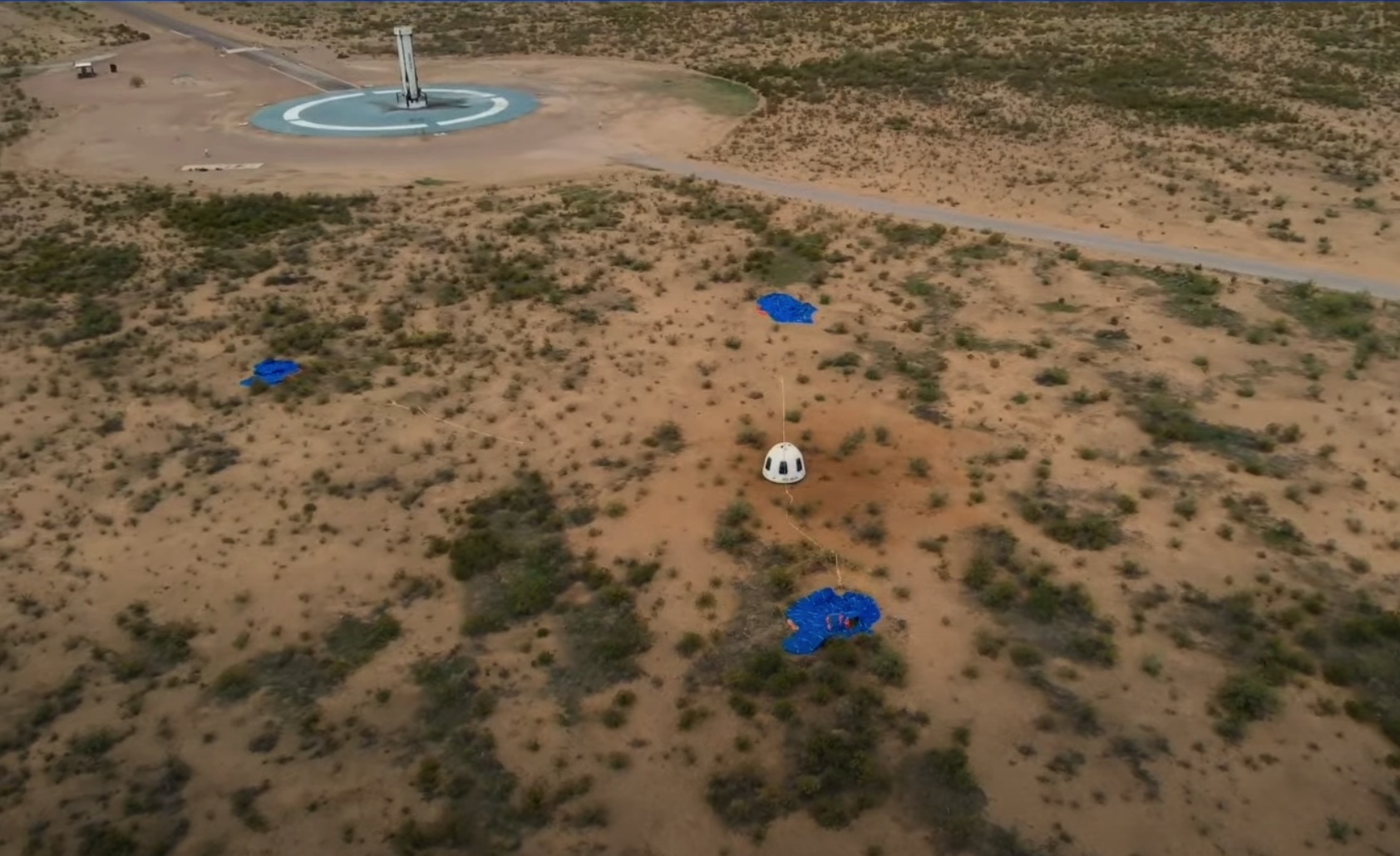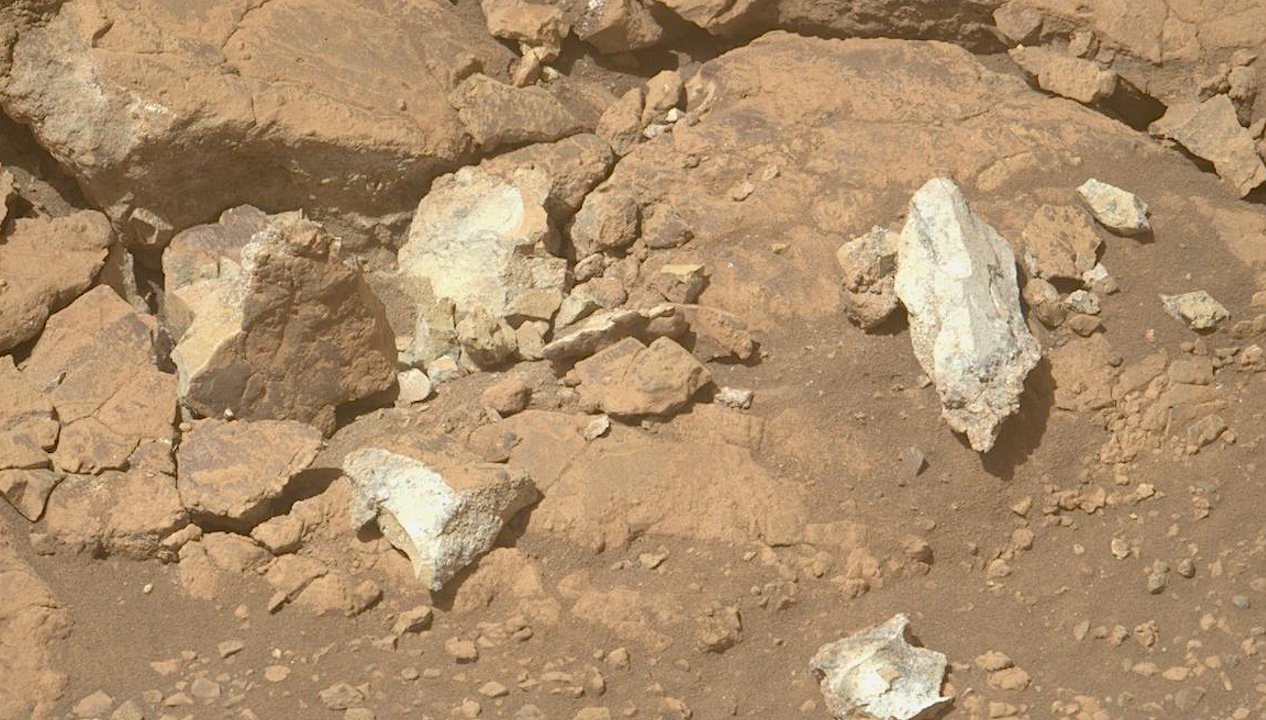Now Reading: Follow-Up Exploration Of The TWA 7 Planet-Disk System With JWST NIRCam
-
01
Follow-Up Exploration Of The TWA 7 Planet-Disk System With JWST NIRCam
Follow-Up Exploration Of The TWA 7 Planet-Disk System With JWST NIRCam
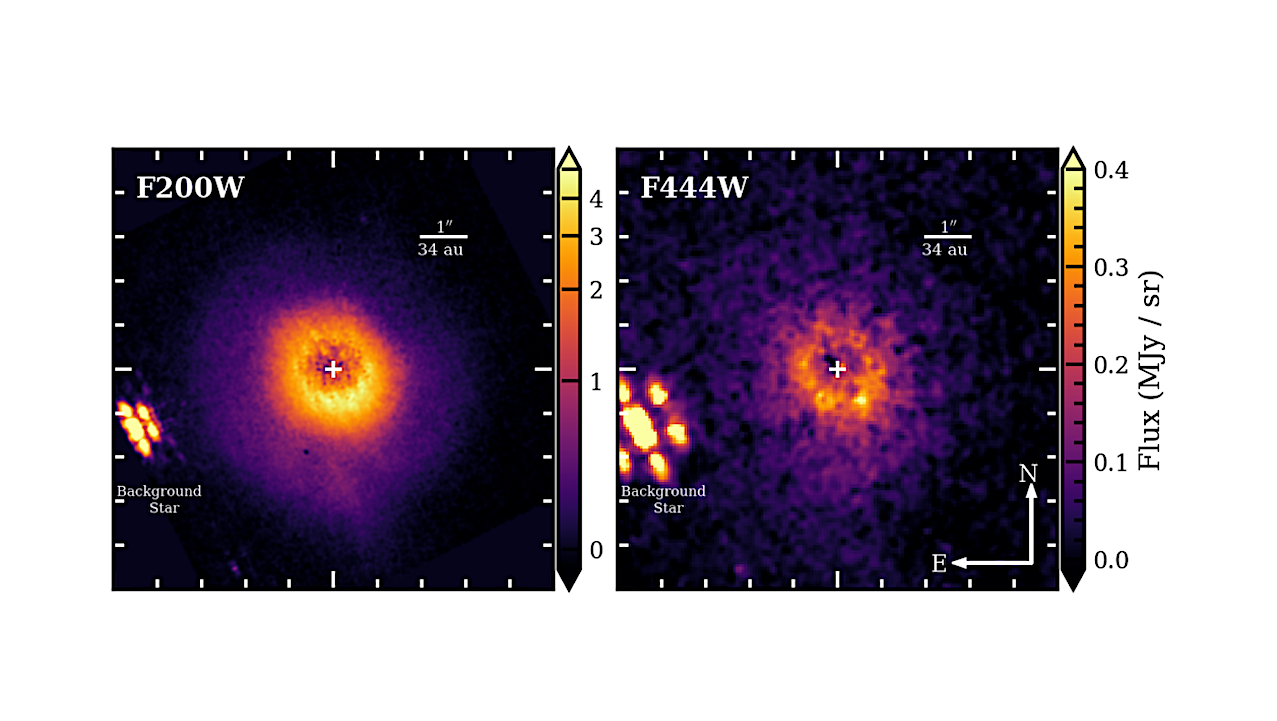

Final MCRDI data reductions for TWA 7 in the F200W (left) and F444W (right) filters. Both images are rotated with North up, and the + represents the star location. Each tick represents 1′′ (∼34 au), with a total FOV of 10′′ by 10′′ . Additionally, the surface brightness for the F200W data is scaled linearly for 1 MJy/sr and is in log scale for >1 MJy/sr to better show the complex disk morphology. — astro-ph.EP
The young M-star TWA 7 hosts a bright and near face-on debris disk, which has been imaged from the optical to the submillimeter.
The disk displays multiple complex substructures such as three disk components, a large dust clump, and spiral arms, suggesting the presence of planets to actively sculpt these features.
The evidence for planets in this disk was further strengthened with the recent detection of a point-source compatible with a Saturn-mass planet companion using JWST/MIRI at 11 μm, at the location a planet was predicted to reside based on the disk morphology. In this paper, we present new observations of the TWA 7 system with JWST/NIRCam in the F200W and F444W filters.
The disk is detected at both wavelengths and presents many of the same substructures as previously imaged, although we do not robustly detect the southern spiral arm. Furthermore, we detect two faint potential companions in the F444W filter at the 2-3σ level.
While one of these companions needs further followup to determine its nature, the other one coincides with the location of the planet candidate imaged with MIRI, providing further evidence that this source is a sub-Jupiter mass planet companion rather than a background galaxy.
Such discoveries make TWA 7 only the second system, after β Pictoris, in which a planet predicted by the debris disk morphology has been detected.

Top Left: MCRDI reduction of TWA 7 in the F200W filter. Top Right: The same reduction as in the left panel, but deconvolved. Arrows and labels point to the three ring components that make up the disk, as well as the dip in surface brightness observed in the northwest region of Ring 2. The dashed circle represents the location of the second ring component. Bottom: Radial surface brightness profile of the TWA 7 disk between our convolved (light blue) and deconvolved (orange) F200W images compared to the 2017 SPHERE data (black). The three ring locations are highlighted. — astro-ph.EP
Katie A. Crotts, Aarynn L. Carter, Kellen Lawson, James Mang, Beth Biller, Mark Booth, Rodrigo Ferrer-Chavez, Julien H. Girard, Anne-Marie Lagrange, Michael C. Liu, Sebastian Marino, Maxwell A. Millar-Blanchaer, Andy Skemer, Giovanni M. Strampelli, Jason Wang, Olivier Absil, William O. Balmer, Raphaël Bendahan-West, Ellis Bogat, Rachel Bowens-Rubin, Gaël Chauvin, Clémence Fontanive, Kyle Franson, Jens Kammerer, Jarron Leisenring, Caroline V. Morley, Isabel Rebollido, Nour Skaf, Ben J. Sutlieff, Evelyn L. Bruinsma, Sasha Hinkley, Kielan Hoch, Andrew D. James, Rohan Kane, Dimitri Mawet, Michael R. Meyer, Skyler Palatnick, Marshall D. Perrin, Shrishmoy Ray, Emily Rickman, Aniket Sanghi, Klaus Subbotina Stephenson
Comments: 27 pages, 15 figures, 6 tables, accepted for publication in ApJL
Subjects: Earth and Planetary Astrophysics (astro-ph.EP)
Cite as: arXiv:2506.19932 [astro-ph.EP] (or arXiv:2506.19932v1 [astro-ph.EP] for this version)
https://doi.org/10.48550/arXiv.2506.19932
Focus to learn more
Submission history
From: Katherine Crotts
[v1] Tue, 24 Jun 2025 18:17:33 UTC (4,762 KB)
https://arxiv.org/abs/2506.19932
Astrobiology
Stay Informed With the Latest & Most Important News
Previous Post
Next Post
-
 012024 in Review: Highlights from NASA in Silicon Valley
012024 in Review: Highlights from NASA in Silicon Valley -
 02Panasonic Leica Summilux DG 15mm f/1.7 ASPH review
02Panasonic Leica Summilux DG 15mm f/1.7 ASPH review -
 03From Polymerization-Enabled Folding and Assembly to Chemical Evolution: Key Processes for Emergence of Functional Polymers in the Origin of Life
03From Polymerization-Enabled Folding and Assembly to Chemical Evolution: Key Processes for Emergence of Functional Polymers in the Origin of Life -
 04How New NASA, India Earth Satellite NISAR Will See Earth
04How New NASA, India Earth Satellite NISAR Will See Earth -
 05And Thus Begins A New Year For Life On Earth
05And Thus Begins A New Year For Life On Earth -
 06Astronomy Activation Ambassadors: A New Era
06Astronomy Activation Ambassadors: A New Era -
07SpaceX launch surge helps set new global launch record in 2024













